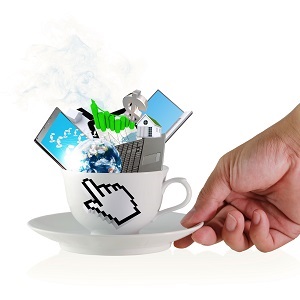Whenever I have the need for a quick innovation fix, I know where to look. Whenever I start to feel numb about VR, and need to see something new or just get jazzed about what’s possible, I definitely know where to start. While many companies are tight-lipped, wrapping their future in non-disclosure agreements and furtive under-communication, there remain three reliable sources of innovation at your doorsteps: the incubator, the startup pavilion, and the meetup. Let me show you what I mean.
The Incubator
Incubators are power-connection-idea rich environments—physical spaces—that exist for the purpose of bubbling up innovative solutions for industry. I love visiting them. These innovation sandboxes may be funded by a university, a few partners, or even an entire community. Look at the University-based incubators like the Austin Technology Incubator, the University of East London’s Knowledge Dock, or the ASU Incubator. Or look at community-based incubators like TechTown Detroit, where the future, like coffee, is percolating daily.
A sign I saw while visiting an Incubator in Kitchener, Ontario, Canada.
The Start-Up Pavilion
Then there are the start-up pavilions, which I consider to be artisan coffee shops of innovation. When I need a soothing cup of java, I like to find a local shop, not a spiritless chain. So it’s natural that, when I am looking for new, surprising, and delightful technologies, I prefer to stroll through the small start-up pavilions at major conferences. Sometimes these are small exhibit spaces carved from the real estate of major conference expos; at other times, they exist as launch competitions nested in among conference sessions. See these examples: the ISTE 2016 Start-up pavilion application and floor plan; the student start-up competition at SXSW; the adult launch competition at SXSW. These innovation experiences, like tasteful coffee, go down smooth, with exquisite tone and body.

The Meetup
The meetup is the ultimate in decentralized innovation experience. The meetup occurs independently in cities across the world, on a schedule that each community itself warrants. I was recently invited to speak at the Los Angeles VR Meetup, a monthly gathering of VR/AR enthusiasts and professionals in the Hollywood area. But this is a meetup on steroids, lucid like a bold and robust cup of coffee. My presentation was entitled “Three things you didn’t know about VR (and were afraid to ask).” In this December talk, I addressed the questions: “Why does VR Make People Sick?”, “Is VR bad for children?”, and “Where is all the educational VR content people are hoping for?”
But like a cup of chesty coffee, accompanied by hearty conversation with good friends, the real flavor of the event occurred after the presentation, during a magnificent question & answer breakout–and the ensuing personal networking. That’s when the innovation, the insight, the creative interchange started to permeate the room, like ground coffee soaking its way through a personable French press:
I listened attentively to well-flavored people like Max Orozco, co-founder of Lumeum VR, who is dedicated to “bringing VR to those who need it the most” (such as those with limited mobility and the elderly).
I relished the moments with Michael Lent, a transmedia, film, game, and comic creator who is shaping a website dedicated to “stories for the new reality.” He came to the meetup in search of opportunities for narrative VR in education. Incidentally, Michael offered the following insight: “As far as trends, I notice that WordPress can now officially support 360-degree images, video and dedicated VR content in the browser. Meanwhile, Google is beta testing the WebVR API in Chrome. It sounds like we’ll be able to browse the web in VR soon.”
I listened to creatives like Darius Clarke, who is also the principal of Simignite. He leads a curriculum development group that aims to “give youth x-ray vision and fantasy vision” through VR.
I exchanged cards and lengthy conversation with the world-venerated John Rupkalvis, who reminded me of the upcoming 3D-Con 2017 conference, a joint effort of the National Stereoscopic Association Convention and the International Stereoscopic Union World Congress, being held in Irvine (CA), August 8-14, 2017. He also emphasized that today’s “monoscopic 360 degree systems are NOT virtual reality”. So said his late business partner, the late Morton Heilig, who also added: “In real life, we have a strong feeling of immersion in our environment. As such, VR should be immersive.” Rupkalvis, the well-travelled stereo and VR expert, was also bullish on the possibilities for VR in education: “Having conducted numerous tutorials at a variety of educational institutions, including colleges, universities, trade schools, and even K-12 schools, I have gained an appreciation for the numerous ways that complex concepts may be conveyed with clarity through the use of stereoscopic 3D, including virtual reality, augmented reality, and mixed reality systems.”
I spent time running through a mystery simulation using the Microsoft HoloLens, with an interesting discovery when I removed the headgear: that even limited rendered 3D AR imagery on the HoloLens evokes considerable stress on our vision. Hmmm. Problems for the classroom. Good to know.
If the truth be told, I was feeling a bit discouraged after reading Steven Sechrist’s excellent piece entitled “Will 2017 See VR Content Tipping Point?” But, sad no more. I got my innovation fix at a meetup. Yes, sir! VR is alive and well. Now I’m off for a brisk cup of coffee and a possibly delightful day. -Len Scrogan

